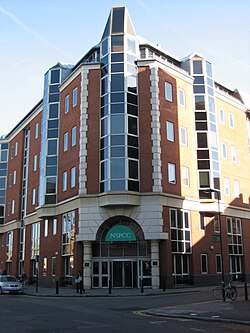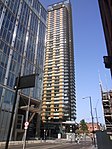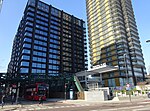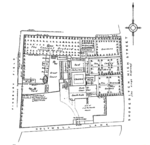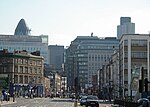Curtain Theatre

The Curtain Theatre was an Elizabethan playhouse located in Hewett Street, Shoreditch (within the modern London Borough of Hackney), just outside the City of London. It opened in 1577, and continued staging plays until 1624.The Curtain was built some 200 yards (180 m) south of London's first playhouse, The Theatre, which had opened a year before, in 1576. It was called the "Curtain" because it was located near a plot of land called Curtain Close, which derived its name in turn from its proximity to the walls of Holywell Priory, a curtain wall being a section of wall between two bastions. (The name bears no relationship to the front curtain associated with modern theatres.) The remains of the theatre were rediscovered in archaeological excavations in 2012–16. The most significant revelation was that the Curtain was rectangular, not round. The excavation revealed a 14-metre (46 ft) stage, and evidence of a tunnel under the stage and galleries at the first floor level. Small finds included a ceramic bird whistle; ceramic money boxes for collecting entry fees; beads probably used for decorating stage costumes; and a small statue of Bacchus.
Excerpt from the Wikipedia article Curtain Theatre (License: CC BY-SA 3.0, Authors, Images).Curtain Theatre
Hewett Street, London Shoreditch (London Borough of Hackney)
Geographical coordinates (GPS) Address Nearby Places Show on map
Geographical coordinates (GPS)
| Latitude | Longitude |
|---|---|
| N 51.523055555556 ° | E -0.079722222222222 ° |
Address
Hewett Street
Hewett Street
EC2A 3NN London, Shoreditch (London Borough of Hackney)
England, United Kingdom
Open on Google Maps
